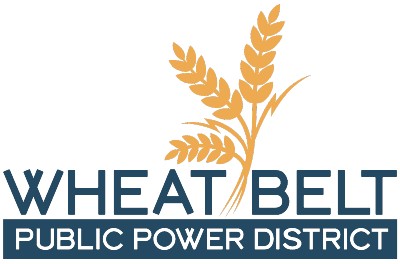Our team at Wheat Belt PPD is always looking ahead, exploring ways to innovate and utilize new technologies to improve our services. As our nation increasingly relies on electricity to power the economy, keeping the lights on has never been more important. We’re committed to powering––and empowering––our community at a cost local families and businesses can afford.
So how are we working to ensure reliable and affordable power while adapting to a changing energy landscape and our community’s evolving needs?
One critical component of reliable power is the mix of energy resources used to generate the electricity that keeps the lights on across Wheat Belt’s service territory. You may not realize it, but Wheat Belt doesn’t generate electricity. Instead, we purchase it from our energy provider, Tri-State G & T and from there, we distribute it to homes and businesses throughout our community. Our current energy resource mix is made up of 45% coal, 34% renewable, 7% natural gas/oil and 14% contracts (representing generation purchased from various third-party sources).
We’re increasingly using more electricity generated from renewable energy sources, but we still depend on a diverse energy mix to ensure reliable power that’s available to our members whenever they need it.
In addition to managing a reliable energy mix, Wheat Belt is using technology to enhance our local grid, limit service disruptions and improve outage response times.
Advanced metering technology, also known as AMI, enables two-way communication between the PPD and consumers. In the event of a power outage, AMI helps pinpoint the exact location of the outage and can even analyze damaged or tampered meters. AMI helps Wheat Belt save money with real-time data, and ultimately improves power reliability for our entire community.
Proactive tree trimming is another way we limit service disruptions. Scheduled trimming keeps power lines clear from overgrown limbs that are likely to fall. Drone inspections of lines and vegetation have allowed us to reduce labor and equipment costs while bolstering reliability. Through the use of small drones, we can accurately monitor the health and growth of trees and identify potential problems. As technology advancements become more accessible, we anticipate using advanced mapping software to better maintain the environment while providing more reliable service.
One of the best methods for improving our services to you is monitoring trends and leading practices from other public power districts and electric co-ops in Nebraska and across the country. Learning from other systems is one of the many benefits of the cooperative business model because for us, it’s about cooperation, not competition.
As we turn our focus to 2024, Wheat Belt will continue working to provide the reliable, affordable electricity you expect and deserve––for today and tomorrow.
